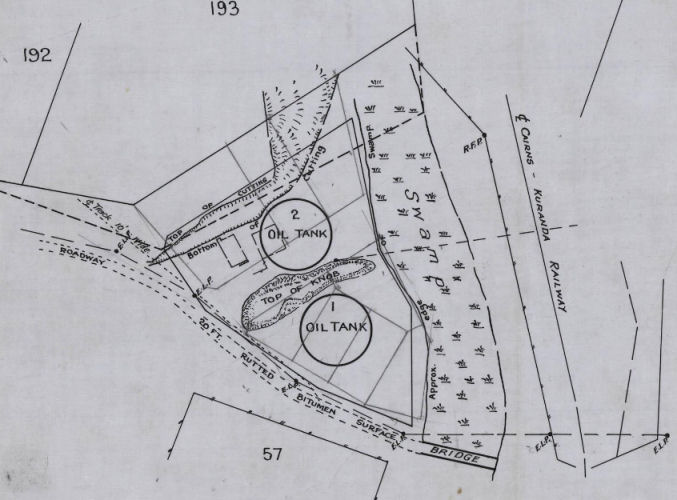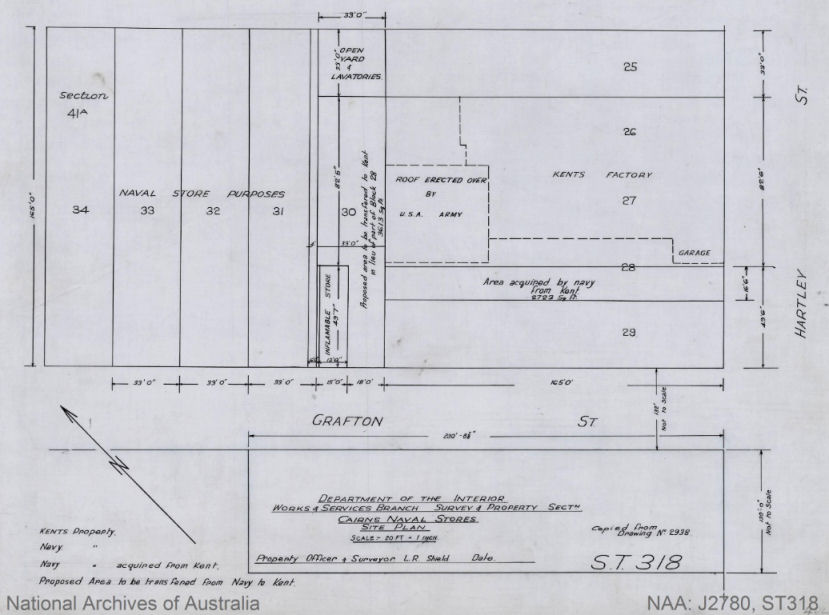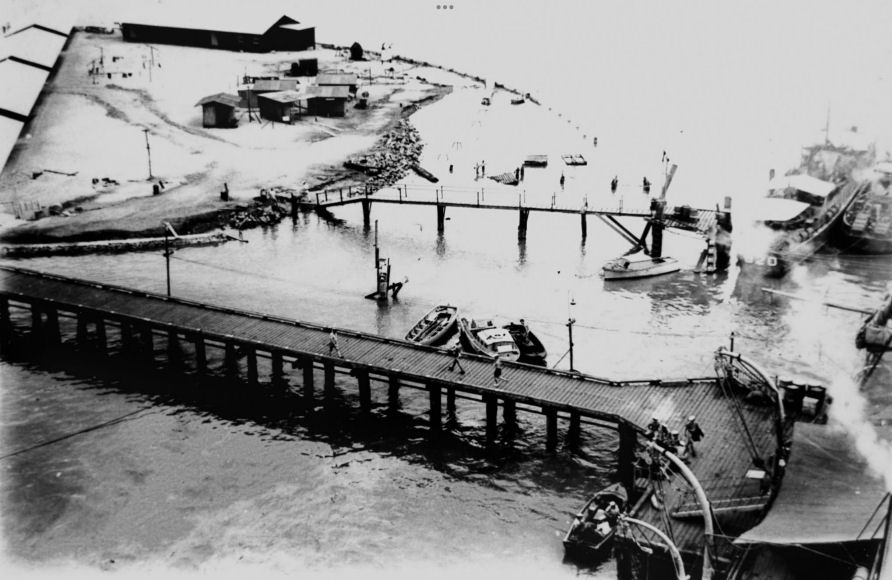HMAS KURANDA
RAN SHORE STATION IN CAIRNS AREA
IN AUSTRALIA DURING WWII
![]()
In June 1942, two US Army Divisions and an Australian Army Division used the general Cairns area for amphibious training. Royal Australian Navy personnel crewed and carried out maintenance on the escort vessels used by the Australian division. Trinity Wharf was extended in 1942 and again in 1943 to accommodate the increased number of ships and to accommodate the repair, refuelling, and victualling activities required.
Lieutenant Commander Norman Stewart Pixley, RANR, was the first Naval Officer in Charge NOIC in Cairns. On 4 March 1943, Acting Captain Ernest Clifford Rhodes, RAN was appointed as NOIC Cairns. Acting Captain Rhodes was at that time the Commanding Officer of HMAS Platypus, which was permanently moored in Cairns and was used as his office as NOIC Cairns. He oversaw the administration of four destroyers, two sloops, thirteen minesweepers and four survey vessels.
Work was underway on a new RAN base headquarters in Cairns at the end of Spence Street, plus an armament and naval stores depot, and an oil fuel location at Edge Hill with a capacity of 15,000 tonnes of furnace oil and 10,000 tonnes of distillate.

Plan:- NAA
Naval Oil Tanks at Edge Hill
Commander Henry Hersee Palmer, RAN took over as NOIC Cairns on 18 April 1944. In May 1944, HMAS Platypus left Cairns for a major refit. By then the new Naval Headquarters in Cairns was ready and HMAS Kuranda was commissioned on 8 May 1944.
The RAN had Stores buildings in Grafton Street, Cairns during WWII. After the RAN moved out the building was occupied by No. 6 Transportation and Movements Office and RAAF Canteen Services in August 1945.

Plan:- NAA
Cairns Naval Stores, Grafton Street, near corner with Hartley Street
HMAS Kuranda looked after the refuelling, victualling and maintenance of minor naval craft and was also responsible for the laying of sea mines in the sea out from Cairns harbour.
From March 1943, WRANS were based in Cairns. The first four WRANS were teleprinter operators from HMAS Harman. They were:-
Mary Elizabeth "Betty" Goodman WR/517
Bette Cleary
Daphne Beryl Samms WR/386
Betty Grace Davis WR/871
Two writers and four coders arrived shortly later. At its peak HMAS Kuranda had more than 60 WRANS. Some of the local WRANS lived in their houses and the out-of-towners lived at "Homeleigh" boarding house which became the Wrannery for HMAS Kuranda. A building called "Auchenflower" became the WRANS Officers' Mess.
The volume of ships using HMAS Kuranda and HMAS Magnetic in Townsville reduced significantly within six months of the commissioning of HMAS Kuranda. A decision was eventually made to close down HMAS Kuranda. HMAS Magnetic with its wireless station and better slipping facilities for boats was selected to stay in service.
HMAS Kuranda was paid off on 2 January 1945 only 8 months after it was commissioned. Its accounts were transferred to HMAS Magnetic in Townsville. The Naval Barracks at HMAS Kuranda which were sited on approximately 44 acres of foreshore were taken over by the RAAF. Fairmile Jetty and Platypus Jetty were both disposed of after the closure of HMAS Kuranda.

Photo:- SLQ
HMAS Kuranda, in Cairns, north Queensland

Plan:- NAA
Plan of HMAS Kuranda as per the above photograph
REFERENCES
HMAS Kuranda - Sea Power Centre Australia
ACKNOWLEDGEMENTS
I'd like to thank James Thewlis for his assistance with this web page.
Can anyone help me with more information?
"Australia @ War" WWII Research Products
|
© Peter Dunn 2015 |
Please
e-mail me |
This page first produced 29 April 2025
This page last updated 29 April 2025